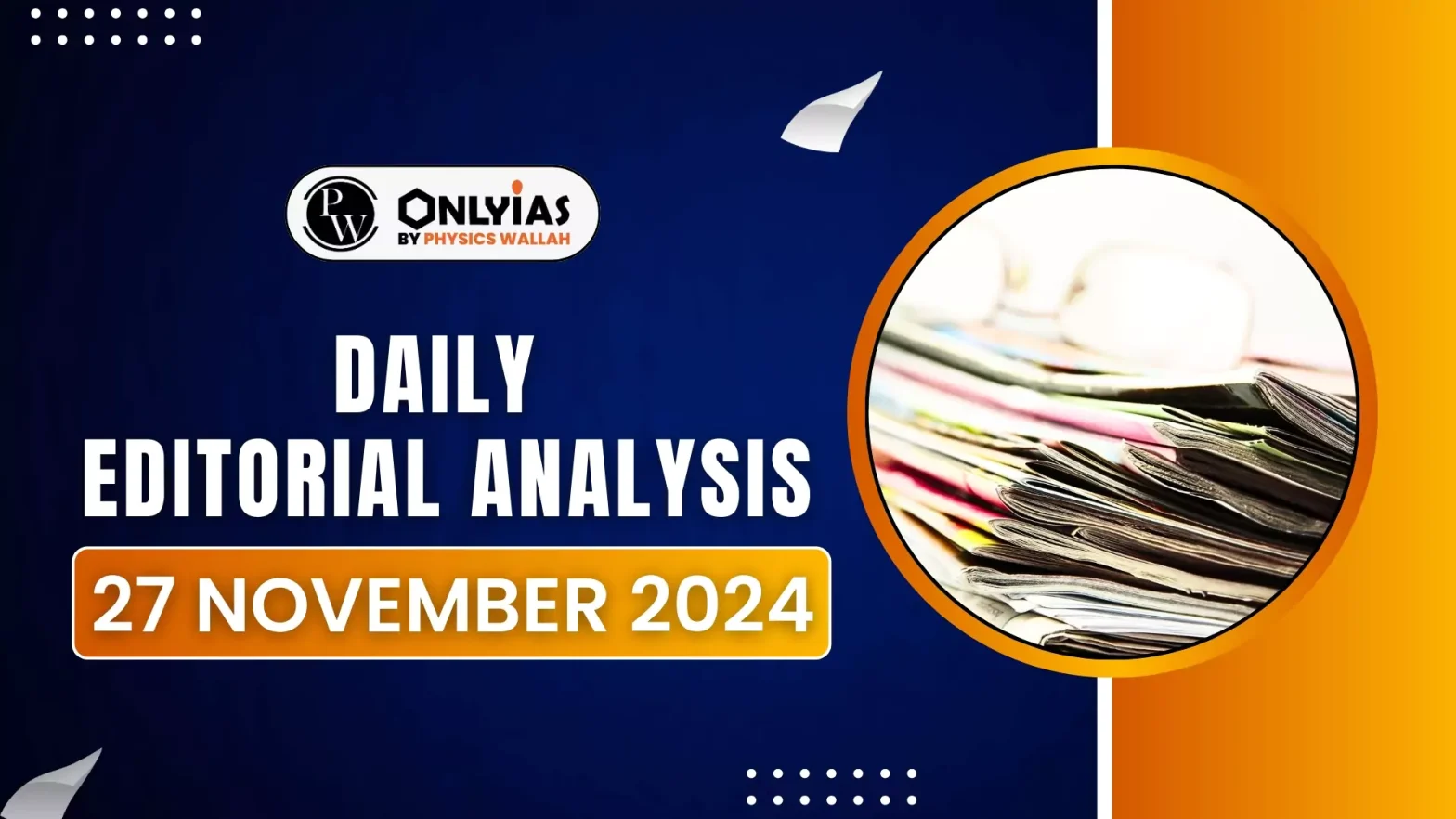India’s recent signing of the Biodiversity Beyond National Jurisdiction (BBNJ) Agreement, also known as the High Seas Treaty, has sparked both optimism and skepticism among maritime observers.
Coverage of BBNJ:
- The BBNJ Agreement covers the high seas, the deep sea floor, and the international seabed area.
- The high seas are the areas of the ocean that are outside of countries’ exclusive economic zones, and make up 61% of the ocean.
- Together, these areas make up around two-thirds of the ocean’s surface and 95% of its volume.
|
Enroll now for UPSC Online Course
Need for the Treaty
- Address high seas challenges: The treaty is essential to address critical challenges facing the high seas, including:
- Rising Pollution: Escalating pollution from plastic waste, chemical runoff, and oil spills is severely damaging marine ecosystems.
- Overfishing: Unsustainable fishing practices are depleting resources, threatening species, and disrupting ecological balance.
- Marine Ecosystem Deterioration: Habitat destruction, climate change, and illegal resource extraction are accelerating the decline of ocean health.
- Ensure collective responsibility: The high seas are considered a global commons, where the principle “everyone’s responsibility is no one’s responsibility” prevails.
-
- This has led to unregulated exploitation and minimal accountability, necessitating an agreement to ensure collective responsibility.
Note: An ocean is a valuable source of many resources, including:
- Energy: Oil and natural gas are drilled from the ocean and used to power homes and cars, and manufacture plastic.
- Construction materials: Sand and gravel are extracted from the ocean for construction and beach nourishment.
- Minerals: The ocean contains valuable minerals such as nickel, copper, cobalt, and rare-earth metals.
- Food: Fish and shellfish are caught from the ocean.
- Biomedical organisms: The ocean contains organisms that have potential to fight disease.
|
Treaty Objectives
The BBNJ treaty is the third implementing agreement under the United Nations Convention on the Law of the Sea (UNCLOS). It follows previous agreements on deep-sea mining and fisheries management. The treaty focuses on three core objectives:
- Conserving Marine Biodiversity: Protecting marine biodiversity beyond national jurisdictions, endangered species and fragile ecosystems are crucial for safeguarding the health of the world’s oceans.
- If these ecosystems are not conserved, the ecological balance could be disturbed, leading to far-reaching environmental consequences.
- Conservation efforts can be supported through the establishment of Marine Protected Areas (MPAs.
- Equitable Sharing of Marine Genetic Resources: Wealthier countries and companies often exploit these resources—such as marine organisms and their genetic materials—from the high seas to create products like medicines.
- However, the benefits from such activities should also be shared with poorer and developing nations, who may lack the technological capacity to harness these resources themselves.
- Environmental Impact Assessments (EIAs): The treaty mandates Environmental Impact Assessments (EIAs) for activities that may harm marine environments.
Check Out UPSC CSE Books From PW Store
Challenges with the Treaty
- Slow Ratification Process: Despite the treaty being signed by 104 countries, only 14 nations have ratified it so far.
- The treaty cannot come into force until it reaches the required threshold of 60 ratifications.
- Overlapping Jurisdiction: Geopolitical rivalries and territorial disputes, such as in the South China Sea, complicate treaty implementation by hindering consensus on Marine Protected Areas (MPAs).
- Coastal nations, especially in Southeast Asia and the Bay of Bengal, fear high-seas national parks may infringe on territorial rights or restrict economic activities like fishing and oil extraction.
- Asymmetry in Maritime Governance: Wealthier nations may exploit weak accountability by misreporting activities, while poorer nations face resource and technological constraints in implementing the treaty.
- Narrow Focus: By prioritizing the high seas, the treaty overlooks the interconnectedness of marine ecosystems.
- Harmful practices in Exclusive Economic Zones (EEZs) like overfishing, pollution, and habitat destruction often impact international waters, making this approach insufficient.
- Weak Enforcement: The treaty mandates Environmental Impact Assessments (EIAs) but excludes key threats like oil and gas exploration, undermining its effectiveness in protecting marine ecosystems.
Conclusion
States must recognize oceans as a shared global resource and work collectively to protect them. However, the success of the treaty depends on overcoming its weak enforcement mechanisms and geopolitical challenges.
![]() 27 Nov 2024
27 Nov 2024

